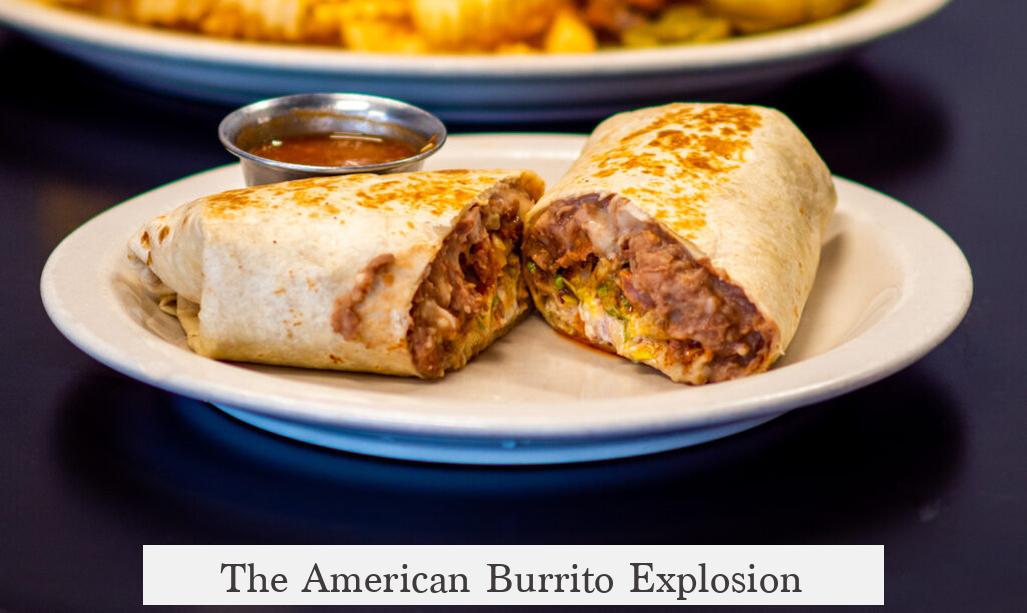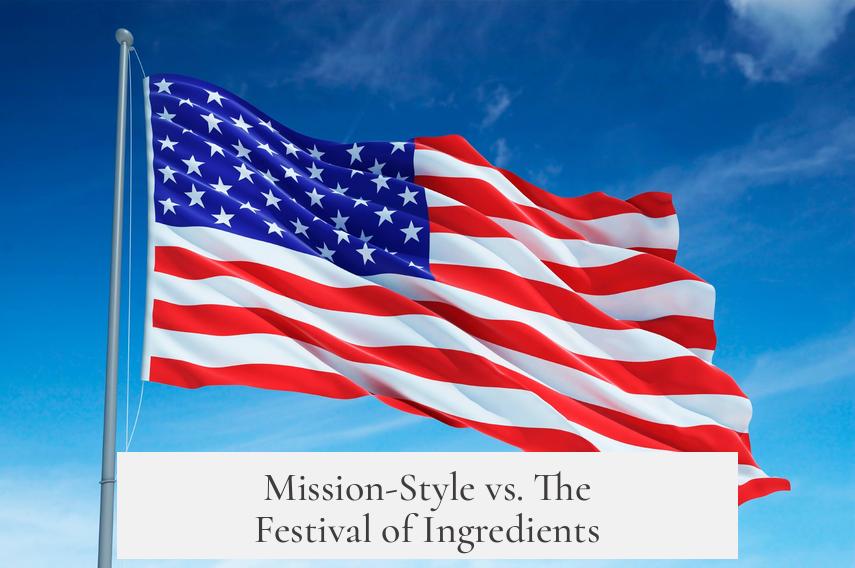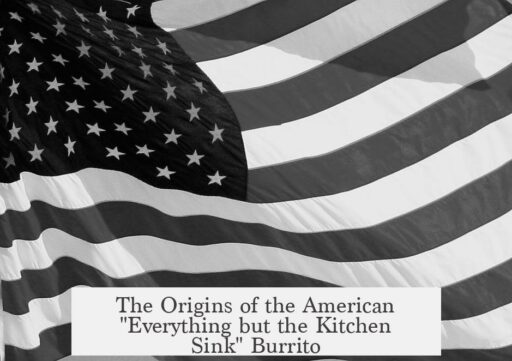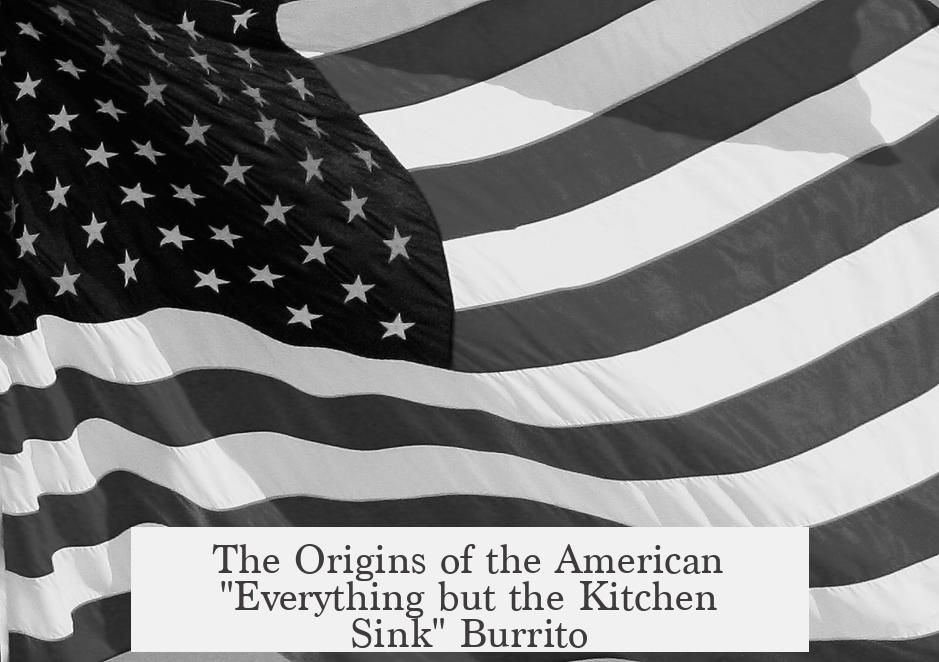The American “everything but the kitchen sink” style burrito originates from the Mission District of San Francisco, where the Mission-style burrito was first developed in the 1960s. Unlike traditional Mexican burritos, which use simple ingredients such as a tortilla, meat, and possibly onions or peppers, Mission-style burritos feature large flour tortillas filled with rice, beans, meat, salsa, guacamole, sour cream, cheese, and other additions.
Traditional Mexican burritos remain straightforward. They often contain only a wheat tortilla wrapped around meat like beef or pork, with occasional onions and peppers. These burritos vary by region but typically stay minimalistic and focused on flavor. The emphasis is on quality and simplicity.
In contrast, the American interpretation emerged in immigrant communities adapting the dish to local tastes and available ingredients. The Mission District’s Mexican-American population played a key role in this evolution. They wrapped numerous fillings into large tortillas, creating a convenient, portable meal packed with proteins, vegetables, and starches.
This style is commonly called the Mission-style burrito. It includes these hallmark traits:
- Extra-large flour tortilla
- Multiple fillings: rice, beans, cheese, meat, salsa, guacamole, sour cream
- Hearty and substantial portion size
The name “everything but the kitchen sink” is a colorful way to describe the abundant mix of ingredients found in these burritos, often compared to their Mexican counterparts, which are simpler.
There is ongoing discussion about the distinction between these styles. Some argue the Mission-style burrito is a uniquely American creation reflecting cultural blending and food innovation. Others see it as a natural evolution of Mexican cuisine adapting to new environments.
For deeper culinary history or specific origin stories, communities like r/askculinary offer detailed insights from food historians and chefs. Multiple Wikipedia pages also detail Mission-style burritos and their cultural significance, although these pages have been subject to debate and editing due to their complex history.
- The American-style burrito with many ingredients originated in San Francisco’s Mission District.
- Traditional Mexican burritos stay simple with tortilla, meat, few additions.
- Mission-style burritos distinguish themselves by size and variety of fillings.
- The “everything but the kitchen sink” phrase reflects the burrito’s packed nature.
- Food forums and historians discuss the cultural blend in burrito evolution.
Who Invented the American “Everything but the Kitchen Sink” Burrito?

Traditional Mexican burritos are straightforward. They typically use a simple tortilla filled with meat, and sometimes a touch of onion or peppers. Nothing fancy, nothing extravagant. But walk into an American burrito joint, and you might find a massive tortilla crammed with rice, beans, cheese, salsa, sour cream, guacamole, lettuce, multiple meats, and possibly even corn chips thrown in for good measure. So, where did this “everything but the kitchen sink” burrito come from?
Let’s unwrap this mystery one tortilla at a time.
Traditional Mexican Burritos: Simple, Honest, and Tasty
In parts of Mexico, the burrito sticks to its roots. Imagine a lightly grilled flour tortilla wrapping up some grilled or stewed meat—often beef or pork. Maybe some grilled onions or fresh peppers join the party. That’s it. No rice. No beans. No cheese dripping over the sides.
This simplicity served a purpose: ease of eating and quick service for workers needing portable meals. Its nature is functional, not flashy.
The American Burrito Explosion

On the flip side, what Americans call a burrito has evolved into a food beast with a mind of its own. This transformation mostly stems from the Mission-style burrito, which originated in San Francisco’s Mission District in the 1960s and 70s.
Unlike the minimalism of Mexican burritos, Mission-style burritos are larger and packed with lots of ingredients: rice, beans, meat, cheese, sour cream, guacamole, salsa, and occasionally fried potatoes or other fixes. This was a huge leap forward from the traditional style.
So, Who Really Invented the American Style Burrito?
Here’s where it gets tricky. There’s no single inventor we can crown king or queen of the “everything but the kitchen sink” burrito. Instead, this style grew organically in places like the Mission District as Mexican-American culinary creativity melded with local ingredients and appetites.
This mulch of flavors reflects the multicultural mosaic of American food culture, where dishes evolve according to local tastes and available resources.
“Is a ‘Mission-style burrito’ the same thing as what folks call an ‘everything and the kitchen sink’ burrito? Often, yes. But purists and food scholars sometimes debate slight differences – like the Mission burrito’s emphasis on rice and beans, which might not be present in all loaded burritos.”
Mission-Style vs. The Festival of Ingredients

The Mission-style burrito is widely credited as the closest ancestor of the American everything-style burrito. From its birthplace in San Francisco’s Mission District, it spread like wildfire, inspiring variations everywhere.
Mission burritos show a deliberate layering—rice nestled below beans, meat on top, then cheese and sauces. This structure keeps everything snug and portable. Many American-style burritos borrow this structure but get more experimental.
Over time, individual restaurants and regions added their own twists—grilled veggies, multiple meats, sour cream, even exotic sauces—until the burrito sometimes looked more like a portable buffet than a simple wrap.
Community Insights and Further Exploration
Curious minds have long debated this burrito evolution. Online food communities like the /r/askculinary subreddit often host deep dives into such culinary origins. Interestingly, Wikipedia links and discussions about Mission-style burritos have been posted and removed multiple times, reflecting ongoing debates.
These forums are gold mines for anyone who wants to dissect food culture history beyond Wikipedia fluff. They remind us that food history can be fuzzy and layered—much like a good burrito.
Why Does This Matter?

Understanding the burrito’s evolution reveals a lot about culture exchange. Traditional Mexican burritos mirror a more agricultural, local food system with minimal fuss. Meanwhile, the Mission-style and the American “everything” burrito exemplify how food bends and stretches when cultures meet and meld.
Next time you bite into a fully loaded American burrito, remember it’s a passionate blend of cultures, ingredients, and stories—quite unlike its humble Mexican ancestor.
Tips for Enjoying Your Burrito (Whatever Style)
- Want the pure traditional experience? Seek out authentic Mexican joints that keep their burritos simple—meat, tortilla, and maybe peppers.
- Craving variety? Go for Mission-style or American burritos that pile on rice, beans, cheese, and sauces.
- Don’t be shy to ask about the burrito “style” at unfamiliar places—you might discover regional gems or quirky local inventions.
- When making burritos at home, try starting simple. Then, experiment by layering flavors and ingredients to find your perfect “kitchen sink” balance.
Wrapping Up
In short, the American “everything but the kitchen sink” burrito doesn’t have a single inventor. It’s the tasty outcome of cultural fusion, creativity, and a hunger for big, satisfying meals. From the plain tortillas of Mexico to the stuffed giants of San Francisco’s Mission District, burritos show how food adapts and innovates.
So, whether you prefer the straightforward Mexican style or a colossal American burrito packed with goodies, appreciate the history and heart behind each bite. After all, delicious food is also delicious history.




